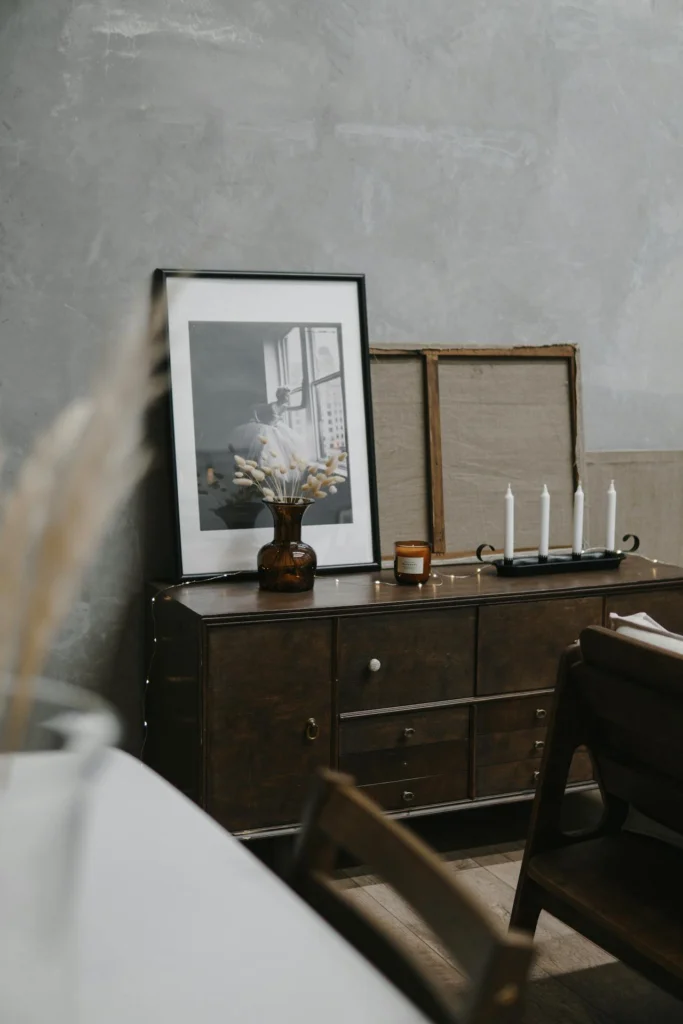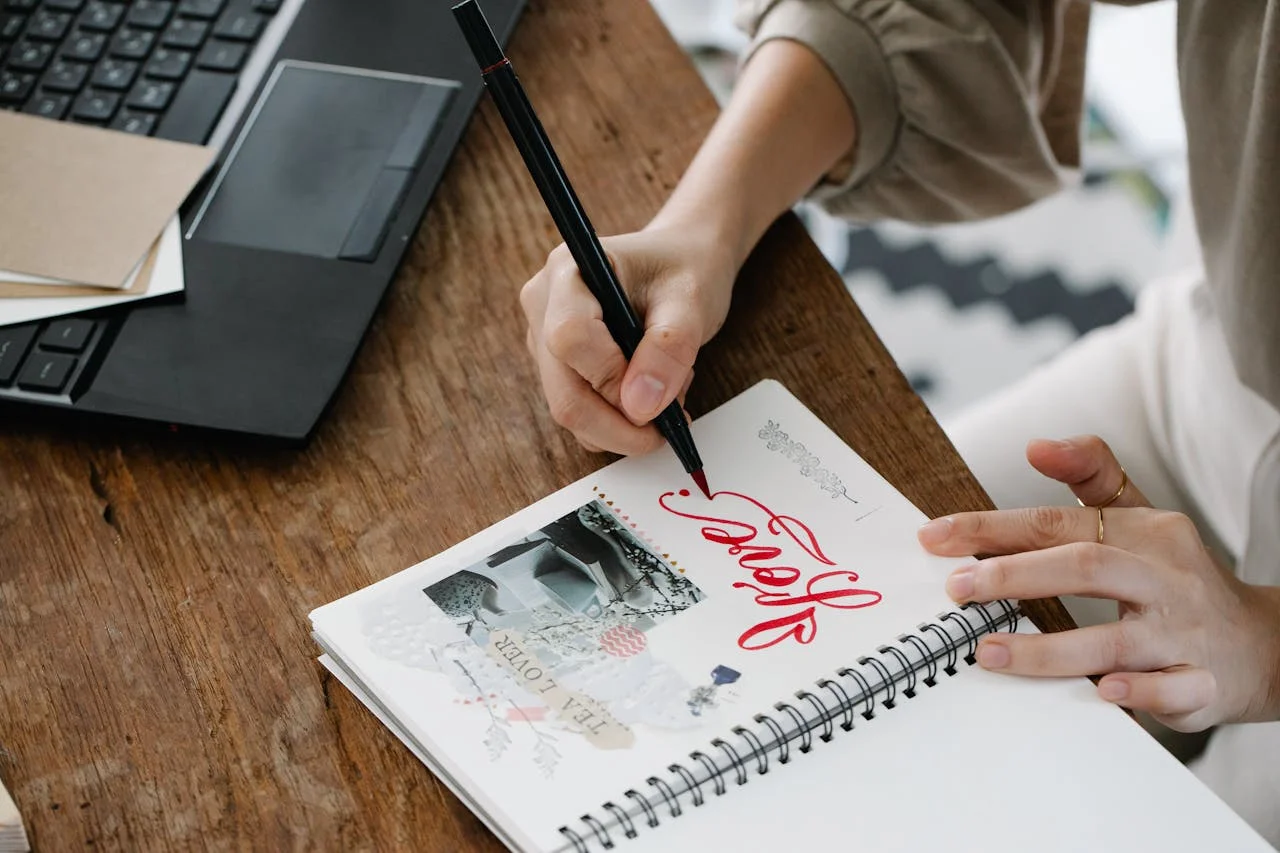
Okay, real talk. I used to be that person who had vision boards tucked away in closets, forgotten behind books, or worse – rolled up under my bed collecting dust bunnies and broken dreams.
But then I discovered digital frames, and honestly? It was like someone finally invented the perfect marriage between my tech obsession and my manifestation goals. No more printing photos that fade, no more magazines scattered everywhere, and definitely no more explaining to guests why there’s a poster of a random beach house taped to my bathroom mirror.
If you’re ready to bring your vision boards into the 21st century (and actually remember they exist), let’s dive into how digital frames can completely transform your goal-setting game.
Why Digital Frames Are Vision Board Gold
Look, I love a good old-fashioned cork board as much as the next person, but digital frames solve pretty much every problem I’ve ever had with traditional vision boards:
The problems we’ve all faced:
- Photos get wrinkled, faded, or fall off
- You get sick of looking at the same images for months
- Moving means starting over from scratch
- Limited space for all your dreams
- Updating means destroying what you already made
Enter digital frames: They rotate images automatically, never fade, store hundreds of photos, and update with a few taps on your phone. It’s like having a vision board that’s always fresh, never boring, and impossibly convenient.
Plus, and I cannot stress this enough, you can change your mind without having to buy new magazines.
5 Game-Changing Ways to Use Digital Frames for Vision Boards
1. The Rotating Dream Gallery (Set It and Forget It)
This is where digital frames really shine. Instead of staring at the same three images for six months until you’re completely numb to them, you can have dozens of inspiring photos rotating throughout the day.
Here’s how I set mine up:
- Morning routine: Career and productivity images (6 AM – 12 PM)
- Afternoon energy: Health and fitness goals (12 PM – 6 PM)
- Evening wind-down: Travel and relaxation dreams (6 PM – 10 PM)
- Night mode: Relationship and family goals (10 PM – 6 AM)
Pro tip: Most digital frames let you set different albums for different times. So your “hustle mode” images show during work hours, but your “zen life” photos appear when you’re trying to relax. It’s like having a vision board that adapts to your actual life.
My personal example: I have my frame show images of organized, beautiful workspaces during my morning coffee time. By 7 PM, it switches to cozy reading nooks and travel destinations. Same frame, totally different energy.
2. The Progress Tracker (Before, During, After)
This one’s a total game-changer, and something you literally cannot do with physical vision boards. You can create folders that show your progress over time.
How to set up progress tracking:
- Folder 1: “Where I’m going” (your goal images)
- Folder 2: “Where I am now” (current progress photos)
- Folder 3: “How far I’ve come” (before photos, small wins)
Real example from my life: I’m learning to cook (don’t laugh), so I have a folder with gorgeous food photos from Pinterest, mixed with terrible photos of my actual attempts, plus screenshots of nice comments people left on my Instagram food posts. Seeing all three together keeps me motivated instead of just discouraged.
The psychology behind this: Your brain needs to see progress, not just perfection. When your frame shows your goal alongside evidence that you’re actually working toward it, you stay motivated instead of giving up.
3. The Mood-Responsive Board (Because Life Happens)
Some days you wake up ready to conquer the world. Other days you can barely conquer the laundry. A digital frame can adapt to both moods.
Create different albums for different energy levels:
| Mood/Energy | Album Focus | Example Images |
|---|---|---|
| Motivated & Ready | Big dreams, ambitious goals | CEO workspace, marathon finish lines, dream house |
| Steady & Consistent | Daily habits, small steps | Morning routines, healthy meals, tidy spaces |
| Low Energy & Need Comfort | Self-care, gentle goals | Cozy blankets, nature walks, supportive friends |
| Overwhelmed & Stressed | Simplicity, peace | Minimalist rooms, meditation spaces, calm waters |
How I use this: I have a “gentle goals” album for days when regular ambition feels too heavy, and a “dream big” album for when I’m feeling unstoppable. Same dreams, different approaches.
The secret: You’re not changing your goals based on your mood, you’re changing how you visualize achieving them. Sometimes you need to see the mountain top, sometimes you need to see the next step.
4. The Social Proof Collection (Other People’s Success Stories)
Here’s something most people never think of: adding images of real people who’ve achieved what you want. Not celebrities, but regular humans who started where you are.
What to include:
- Before/after photos of people with similar goals
- Screenshots of success stories from Reddit, forums, or social media
- Photos of friends or family who’ve achieved what you want
- Images of small businesses, creators, or entrepreneurs you admire
Why this works: Your brain believes what’s possible based on what it sees. When you see other regular people succeeding, it becomes real instead of just aspirational.
Personal story: I added photos of friends who’d successfully changed careers, not because I wanted their exact jobs, but because seeing their faces reminded me that career changes are actually possible for people like me. It made my goals feel achievable instead of impossible.
5. The Interactive Command Center (Smart Home Integration)
Okay, this one’s for my fellow tech nerds, but stay with me even if you’re not super tech-savvy. Many digital frames can connect to your phone, calendar, or smart home system.
Next-level integrations you can try:
- Calendar sync: Show goal-related appointments and deadlines
- Weather integration: Display outdoor fitness goals only on nice days
- App connections: Link to habit tracking apps, fitness apps, or goal-setting tools
- Voice control: “Hey Google, show my travel goals” or “Alexa, display my morning motivation”
The simple version: Even if you’re not into complex setups, you can email photos directly to most digital frames. So when you see an inspiring image on Instagram or Pinterest, you can email it straight to your frame instead of screenshot-hoarding on your phone.
Real-world example: My friend connected her digital frame to her fitness app, so it shows her running goals alongside photos of races she wants to enter. When she hits a weekly milestone, it automatically adds celebration images to the rotation.
Choosing the Right Digital Frame for Your Vision Board
Not all digital frames are created equal, and honestly, some are pretty terrible. Here’s what actually matters:
Must-have features:
- Easy photo uploading (preferably through an app, not just email)
- Good image quality (at least 1920×1080 resolution)
- Scheduling options (different albums at different times)
- Decent size (10+ inches, trust me on this)
Nice-to-have features:
- Touch screen controls
- Multiple album management
- Cloud storage integration
- Smart home compatibility
Budget reality check:
- Under $100: Basic but functional (Nixplay, Aura)
- $100-200: Better quality, more features (Google Nest Hub, Amazon Echo Show)
- $200+: Premium options with advanced features
My honest recommendation: Start with a mid-range option around $100-150. You want something good enough that you’ll actually enjoy using it, but not so expensive that you’re afraid to experiment with it.
Setting Up Your Digital Vision Board: Step-by-Step
Step 1: Choose Your Categories Don’t try to do everything at once. Pick 2-3 main life areas to focus on first.
Step 2: Collect Your Images Gather 10-15 images per category. Mix aspirational photos with progress photos and inspirational quotes.
Step 3: Create Your Albums Most frames let you organize photos into albums or folders. Keep it simple with clear names like “Career Goals” or “Health Journey.”
Step 4: Set Your Schedule Decide when you want to see different types of content. Morning motivation? Evening relaxation? Weekend adventure dreams?
Step 5: Place It Strategically Put your frame somewhere you’ll actually see it regularly. Kitchen counter, bedroom dresser, or home office desk work great.
Step 6: Update Regularly The beauty of digital is how easy it is to refresh. Add new images weekly, remove ones that no longer inspire you.
Troubleshooting Common Digital Frame Issues
“The setup seems complicated” Start super simple. Upload 10 favorite goal images and let them rotate randomly. You can get fancy with scheduling later.
“I don’t want to spend money on another gadget” Fair point. You can actually use an old tablet or iPad as a digital frame. Download a slideshow app and you’re good to go.
“What if I get tired of looking at it?” That’s the beauty of digital – change it up! Unlike physical boards, you can completely refresh your content without starting over.
“I’m not tech-savvy enough for this” Most modern digital frames are designed to be grandma-friendly. If you can use Instagram or Facebook, you can handle a digital frame.
The Digital Frame Reality Check

Let me be honest about what to expect:
You’ll love:
- How easy it is to update and refresh
- Never having images fall off or get damaged
- The ability to include video clips and animations
- How clean and modern it looks in your space
You might struggle with:
- Initial setup (give yourself an afternoon to figure it out)
- Remembering to update it regularly (set a monthly reminder)
- Choosing which images to include (digital hoarding is real)
Common mistakes I made:
- Including too many images at first (overwhelming)
- Not organizing albums clearly (chaos)
- Putting it somewhere I didn’t see it often (pointless)
- Never updating it (defeats the purpose)
Making It Actually Work for You
The key to success with digital vision boards isn’t the technology – it’s using the technology to support your actual goals, not just create a fancy slideshow.
Questions to ask yourself:
- What time of day do I need the most motivation?
- What type of images actually inspire me to take action?
- How often do I want to see the same content before it gets stale?
- What would make me excited to look at this every day?
The ultimate test: If you find yourself looking forward to seeing what image comes up next, you’ve nailed it. If you start ignoring it after a week, time to refresh your approach.
Your Digital Vision Board Journey Starts Now
Here’s the thing about digital frames and vision boards – they’re not magic. They won’t manifest your dreams just by existing. But what they will do is keep your goals visible, fresh, and relevant in a way that traditional vision boards simply can’t match.
And honestly? In our digital world, why shouldn’t our vision boards be digital too? Your dreams deserve the same upgrade that everything else in your life has gotten.
So grab that digital frame, start with simple goals, and watch how much easier it becomes to stay connected to what you’re working toward. Because the best vision board is the one you actually look at, and digital frames make that surprisingly effortless.
Your future self will thank you for making your dreams this accessible. And your current self will love how good it looks in your living room.
Ready to go digital? Start by browsing digital frames online for 10 minutes today. You don’t have to buy anything yet, just see what options are out there. Sometimes the first step is just knowing what’s possible.





Leave a Reply